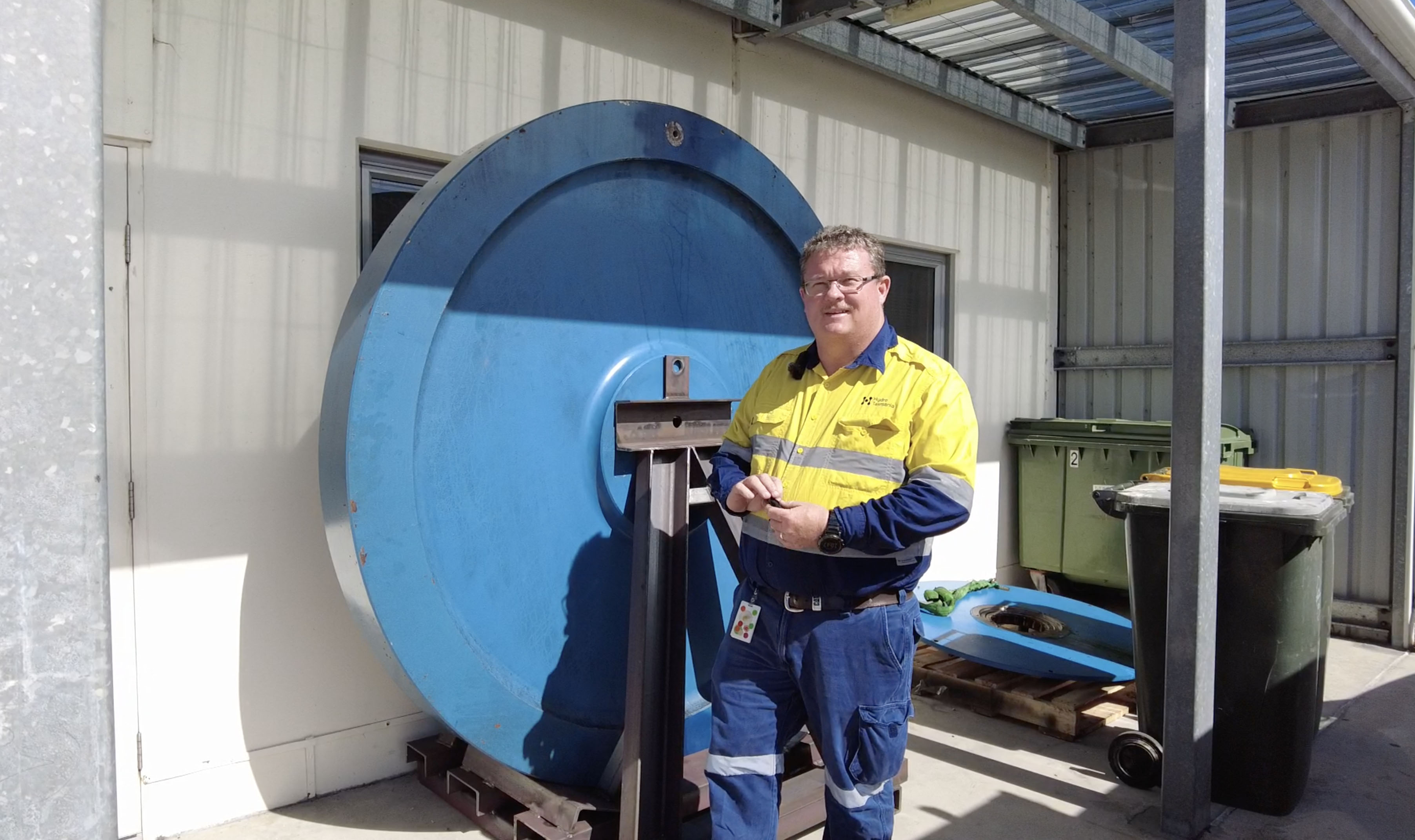Join Us for a Tour of King Island’s Innovative Microgrid

Sitting in the middle of Australia’s Bass Strait, King Island features one of Tasmania’s last remaining true microgrids. ACEP’s chief storyteller, Amanda Byrd, recently visited and produced a video about the cutting-edge microgrid, which is similar to the one in Kotzebue, Alaska.
King Island’s microgrid features integrated wind and solar installations, two 4.2-ton flywheels and a 3-megawatt lead-acid battery energy storage system. Until recently, the battery was the largest in Australia. The microgrid load is around 2.6 MW. The island has about 1 MW of residential rooftop solar, and buys excess solar at a one-to-one rate, $0.25 per kilowatt hour — the same rate residents pay for their power.
A recent addition to the microgrid is a 200 kW demonstration wave energy device that has been operating since July 2021 in a bay near the town of Grassy. The Wave Swell system operates with very few moving parts, making it an interesting innovation for ocean energy.
The microgrid is operated by the state utility, Hydro Tasmania (there is no hydropower on King Island), which serves the island of 1,600 residents, a healthy export beef industry, a famous cheese industry, world-class golfing, bull kelp industries and scheelite mining. The microgrid tour included discussions about Flinders Island, a sister isle northeast of Tasmania that has a similar microgrid, and a trip to the Wave Swell ocean energy system site.
Sit back and take a tour of King Island’s incredible microgrid by clicking here.
For more on ACEP’s video storytelling, please contact Byrd at agbyrd@alaska.edu.
Peter Kempster of Hydro Tasmania stands next to a 4.2 ton flywheel on King Island. Photo by Amanda Byrd


